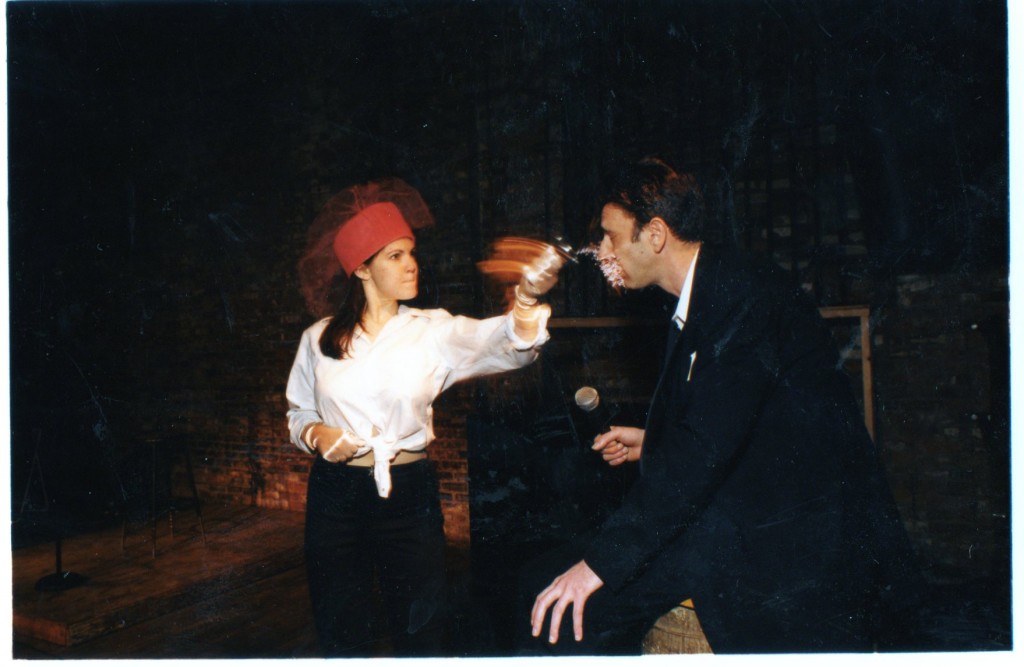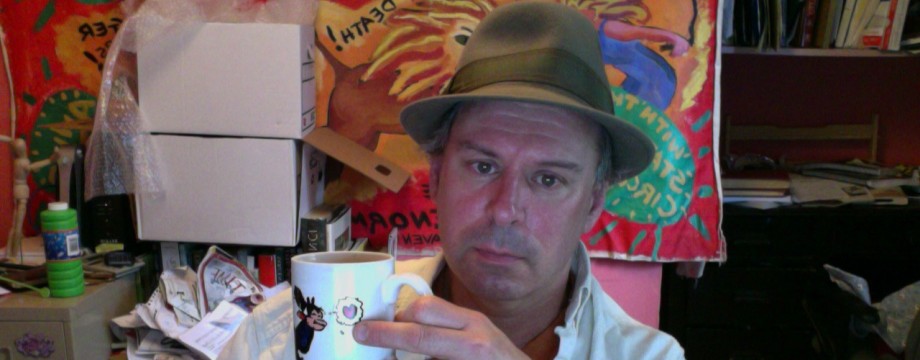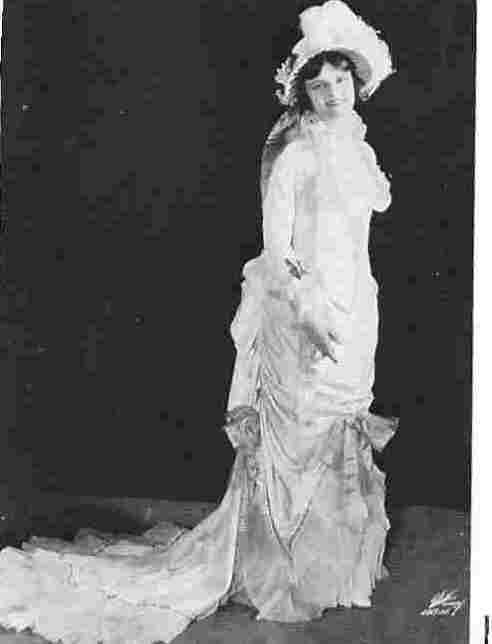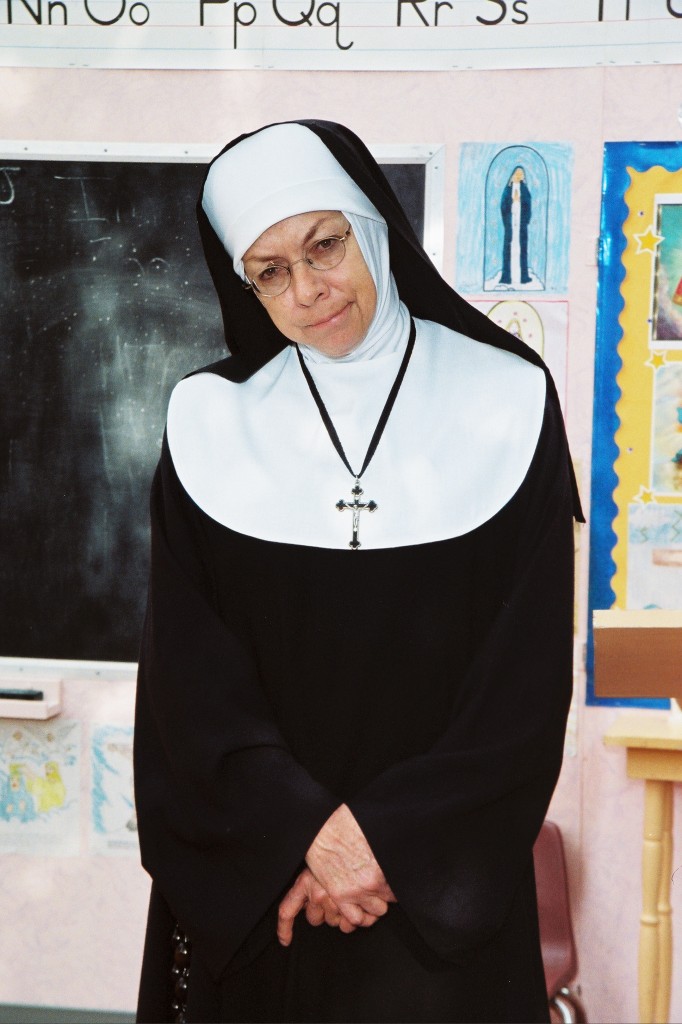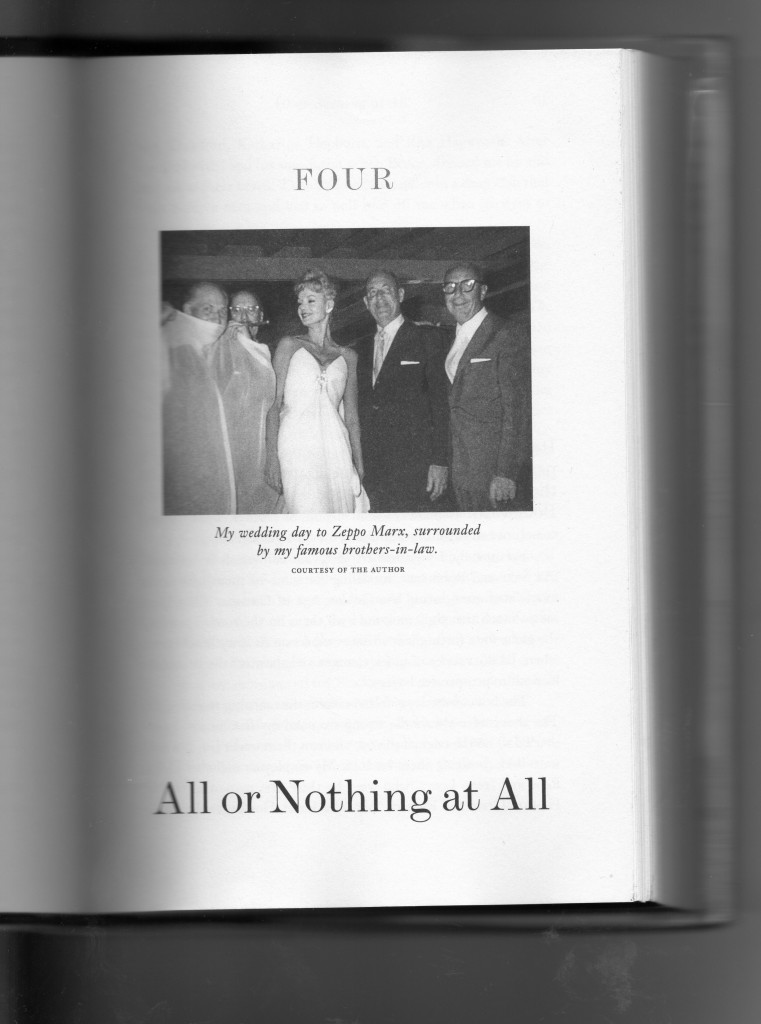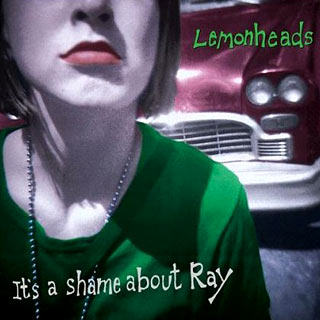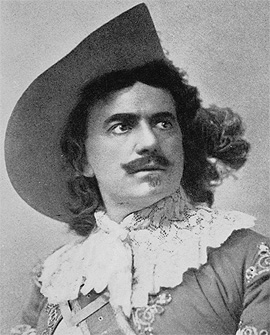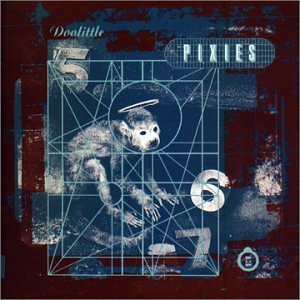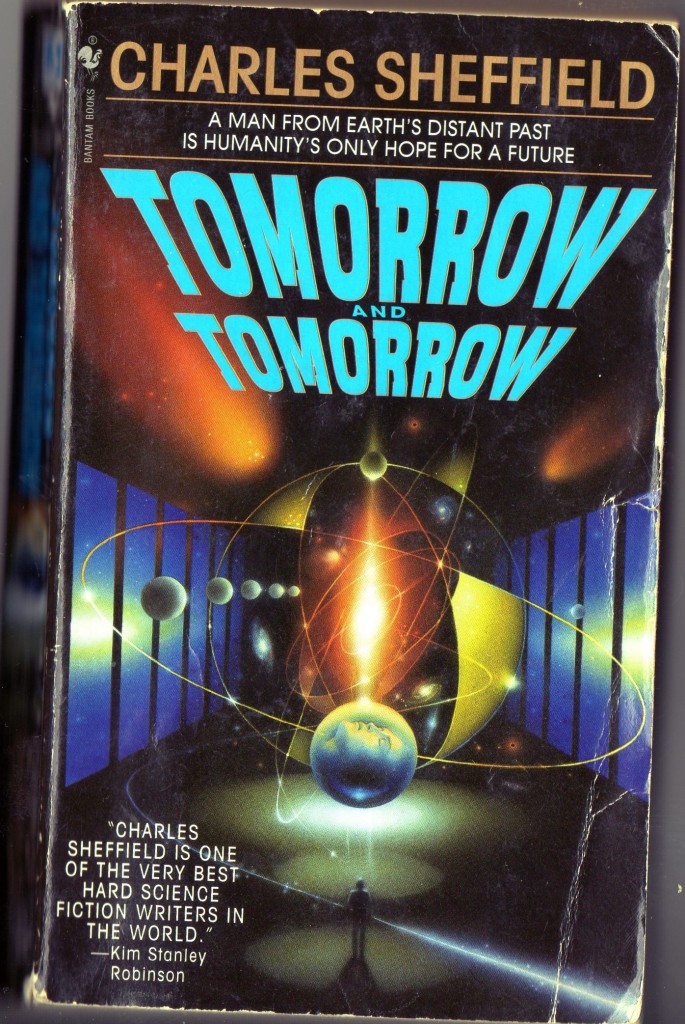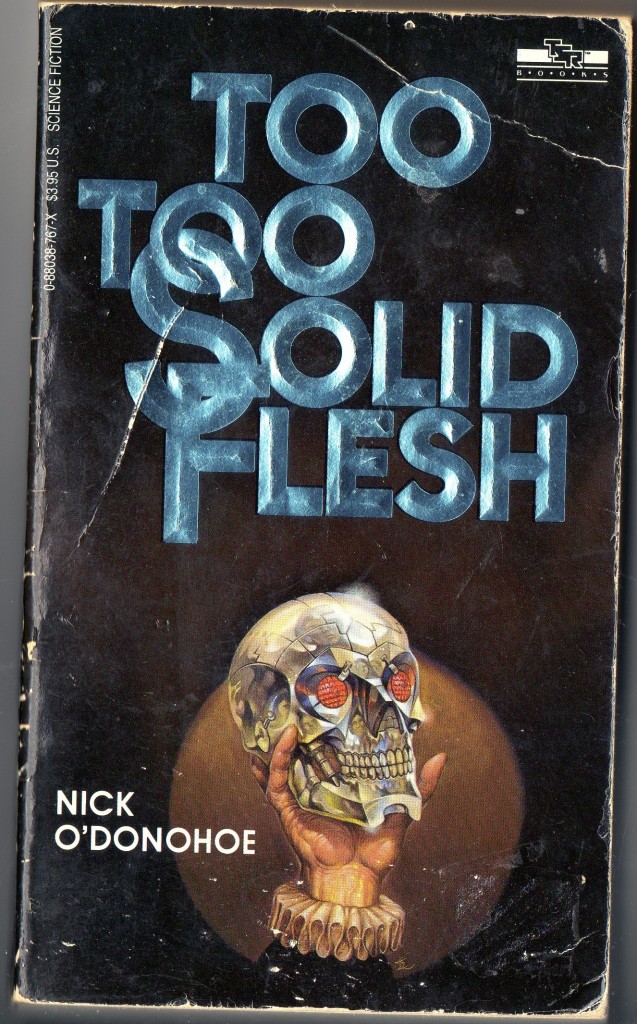
Two Quotes About Lenny Bruce… plus recently rediscovered photos of Gary Cavello as Lenny Bruce in a production of Julian Barry’s play Lenny that I directed for New Haven Theatre Co. in February of 2000. (Other actors in the photos: Kim Mikenis in red, Rob Rocke in purple and Craig Gilbert in yellow.) Photos by Kathleen Cei.

In the early sixties I gained inspiration from two red see-through discs pressed by Fantasy Records. The first, Lenny Bruce’s Picnic in a Graveyard, will make me laugh for a hundred more years. For a long time I found myself imitating his nasal whine and sharp barbs. There’s not enough space here to talk about Lenny Bruce. In ’61 I hitched to New York to see him at the Village Vanguard. Chuck Isreals, a Brandeis classmate and bass player sharing the program with Lenny, introduced us. Even knowing his routines by heart, his spontaneity amazed me. Once, during one of his monologues, there was a loud thud on the floor above; he jumped on a chair, pounded on the ceiling, and screamed out, “Hey Frankenstein, quit jerkin’ off!” He completely cracked me up. Of all today’s comedians, only Richard Pryor can top the Bruce on quick-draw humor. ‘Tis a pity Lenny’s gone. I dedicated Woodstock Nation to him. We all know Lenny’s story. Mother fuckin’. Shit. Piss. An Anglo-Saxon hero.
—Abbie Hoffman, Soon to Be a Major Motion Picture (Perigree, 1980), page 123.
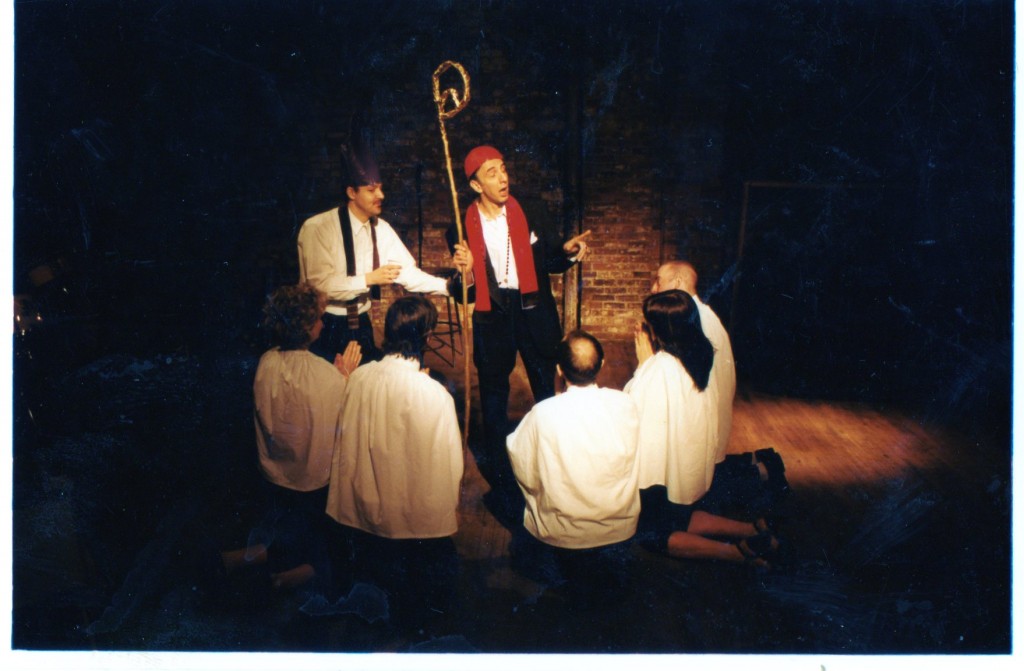
Back then, the Bay Area was just surging with bohemian-type artists and performers; they blanketed the coastline like the city’s famous fog. Raw, new talent emerged—people who were willing to push the satiric envelope just a little further. I became friends with emerging talents Ronnie Schell, Jorie Remus, and a young talented housewife-turned-comedienne, Phyllis Diller. They were all performing at another great club in San Francisco, the Purple Onion. I was so impressed with the talent of these people that I called Herbert Jacoby at the Blue Angel in New York. “Herbert!,” I told him excitedly, “you must book these people, they are all fantastic!” Eventually he did, along with another struggling unknown, Lenny Bruce.
Lenny was one of the sexiest men I had ever met. Extremely good-looking, with an incredible body that just oozed sex appeal (not a very common trait among most comics of the day). But Lenny was more than a comic. He had things to say. And a hell of a lot of those things were spelled with four letters. I went to see him at a local club called FACKS, where he was appearing with singer Jack Jones. I’d heard so much about him I just had to see this guy for myself. Like everyone else, I was shocked by his language. But Lenny Bruce was an extremely bright kid, an intellectual who used certain language only to make a point. His material was strictly for adults, but it was very funny and very powerful.
When, a little later, I was offered an engagement in Hollywood following Lenny on the bill, I told his agent that even though I thought Lenny was brilliant, with my material I could never follow someone with his kind of act. When we eventually did work together, it was at another club in Hollywood, the Interlude, and I opened for him. Despite out different performance styles, we became friends. One night in the dressing room,l I asked if he would write some material for me. Lenny pulled out the cardboard from a shirt he’d just gotten back from the laundry and scribbled out this satire of the song “Autumn Leaves” for me right there on the spot:
The autumn leaves pass by my window
And then the trees, and then the buildings
The automobiles fly by now
The hurricane has finally come
The river overflows
I must prove my love
A raft comes floating by, just room for one
I will miss you most of all,
My Darling, when autumn leaves start to fall.
It’s a dog eat dog world, right?
I wish I still had that piece of cardboard. I recorded his parody on an album called Boo Hoo Ha Ha, and Lenny received a royalty check for the sum of fourteen cents. When he showed it to me, I said, “So, you gonna cash it?” “No, he said, gleefully, “I’m going to keep it and fuck up their books.”
—from How I Lost 10 Pounds in 53 Years—A Memoir, by Kaye Ballard with Jim Hesselman (Back Stage Books, 2006, $24.95)
